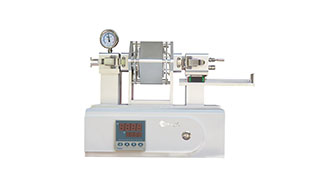Researchers and manufacturers can use a variety of heat treatment formats to handle relatively small amounts of samples or to perform low-throughput operations. Benchtop laboratory ovens tend to perform well at these scales -- but the geometry of the heat treatment chamber can be a limiting factor in some applications.
Research and development (R&D) to produce fine ceramic wires led to the first cylindrical heating chamber in the early 20th century, and since then tube furnaces have become common sense in factory floors and materials laboratories around the world.
What is a tube furnace?
The eponymous component in a tube furnace is the heating chamber. It consists of a circular furnace wall made of high-temperature ceramics; A single void can be formed from a complete cylindrical element or from two semi-cylindrical elements. Fire-resistant heating coils or carbon strips are embedded in the ceramic to evenly distribute heaters around the central chamber. This structure guarantees the highest possible thermal uniformity for handling inorganic and organic compounds.

The main reason for using a tube furnace
The main reason for using tube furnaces is that cylindrical heaters provide unmatched heat uniformity. Components in the single-zone chamber sustain a continuous heat value in excess of 1000°C (1,832 °F) across the entire 360° axis, ensuring optimal heat distribution across the entire part cross-section. This makes tubular furnaces ideal for sensitive heat treatment applications, such as thermocouple calibration.
The tube furnace can also be integrated with multiple heating zones to increase the processing capacity of the instrument. This allows a fully controlled temperature gradient to fine-tune the heating and cooling phases of the heat treatment. It can also limit the peak temperature to a specific target area on the part (usually the central part) so that either end can be safely processed using other machines. This is useful in a range of material testing applications where the mechanical properties of materials can be accurately characterized at high temperatures.
How to choose a tube furnace
Select operating temperature
Note that there is a maximum temperature (can be maintained <;1 hour) and continuous operating temperature (safe, continuous service temperature).
The maximum operating temperature depends on the heating element used.
Select the treatment tube corresponding to the maximum temperature of the furnace.
Select the crucible that corresponds to the maximum temperature of the furnace.
Choose the length of the heating zone according to your sample
Note that there is a total length of the heating zone (length covered by the heating element) and a length of the constant temperature zone (change of less than +/ -1 °C in the center zone). The constant temperature zone is always shorter than the total heating zone. Please select a thermostatic furnace with a longer constant temperature zone than the sample for uniform heating.
Choose tube size (inner diameter) and crucible size according to your sample
Please select the appropriate test tube size and crucible size according to the sample size.
Select input voltage
Choose between 110 VAC and 220 VAC depending on country or region.
Selective a vacuum pump
We are a tube furnace manufacturer. Please feel free to contact us.
评论
发表评论